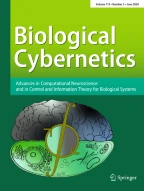Abstract.
The coordinated reset of neural subpopulations is introduced as an effectively desynchronizing stimulation technique. For this, short sequences of high-frequency pulse trains are administered at different sites in a coordinated way. Desynchronization is easily maintained by performing a coordinated reset with demand-controlled timing or by periodically administering resetting high-frequency pulse trains of demand-controlled length. Unlike previously developed methods, this novel approach is robust against variations of model parameters and does not require time-consuming calibration. The novel technique is suggested to be used for demand-controlled deep brain stimulation in patients suffering from Parkinson's disease or essential tremor. It might even be applicable to diseases with intermittently emerging synchronized neural oscillations like epilepsy.
Similar content being viewed by others
Acknowledgments.
This study was supported by the German-Israeli Foundation for Scientific Research and Development (Grant No. 667/00).
Author information
Authors and Affiliations
Corresponding author
Rights and permissions
About this article
Cite this article
Tass, P. A model of desynchronizing deep brain stimulation with a demand-controlled coordinated reset of neural subpopulations. Biol. Cybern. 89, 81–88 (2003). https://doi.org/10.1007/s00422-003-0425-7
Received:
Accepted:
Published:
Issue Date:
DOI: https://doi.org/10.1007/s00422-003-0425-7
